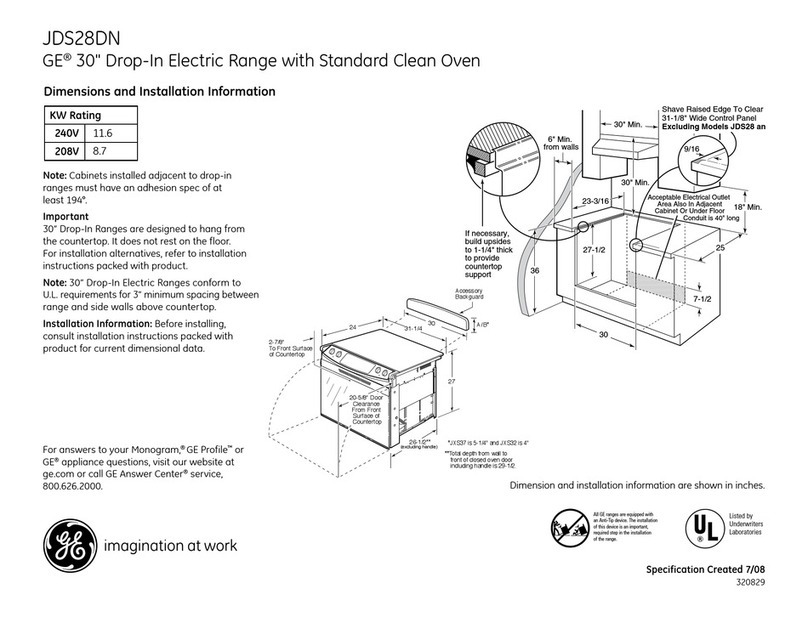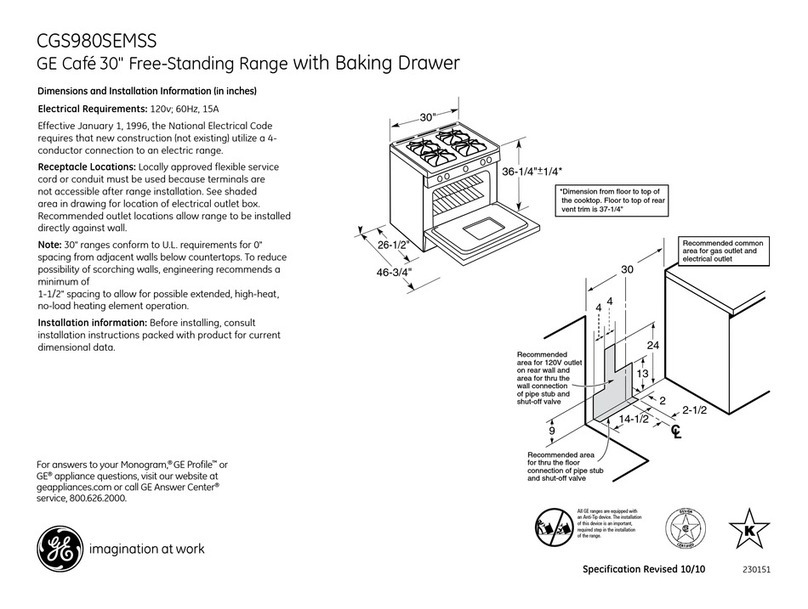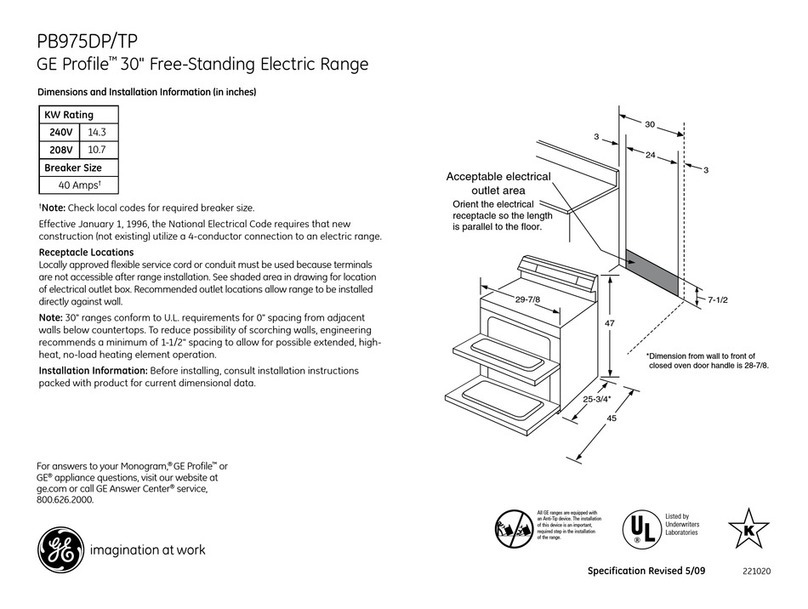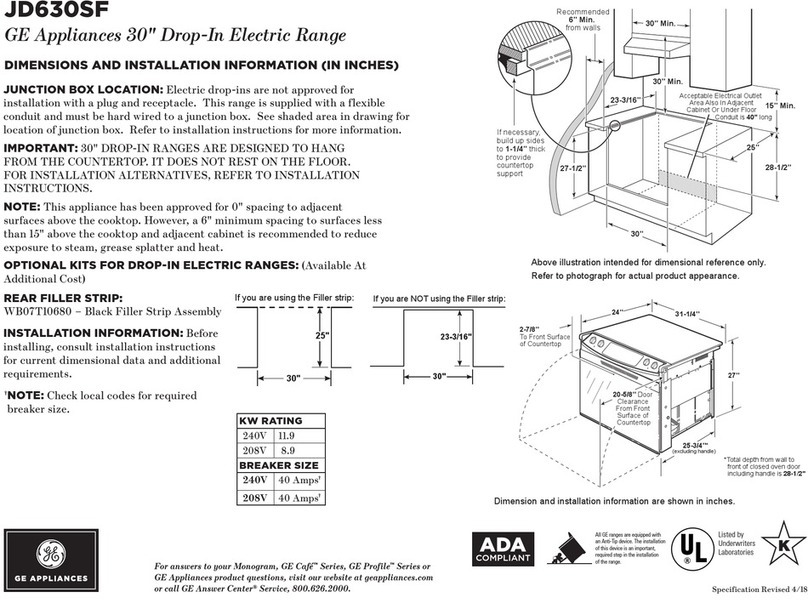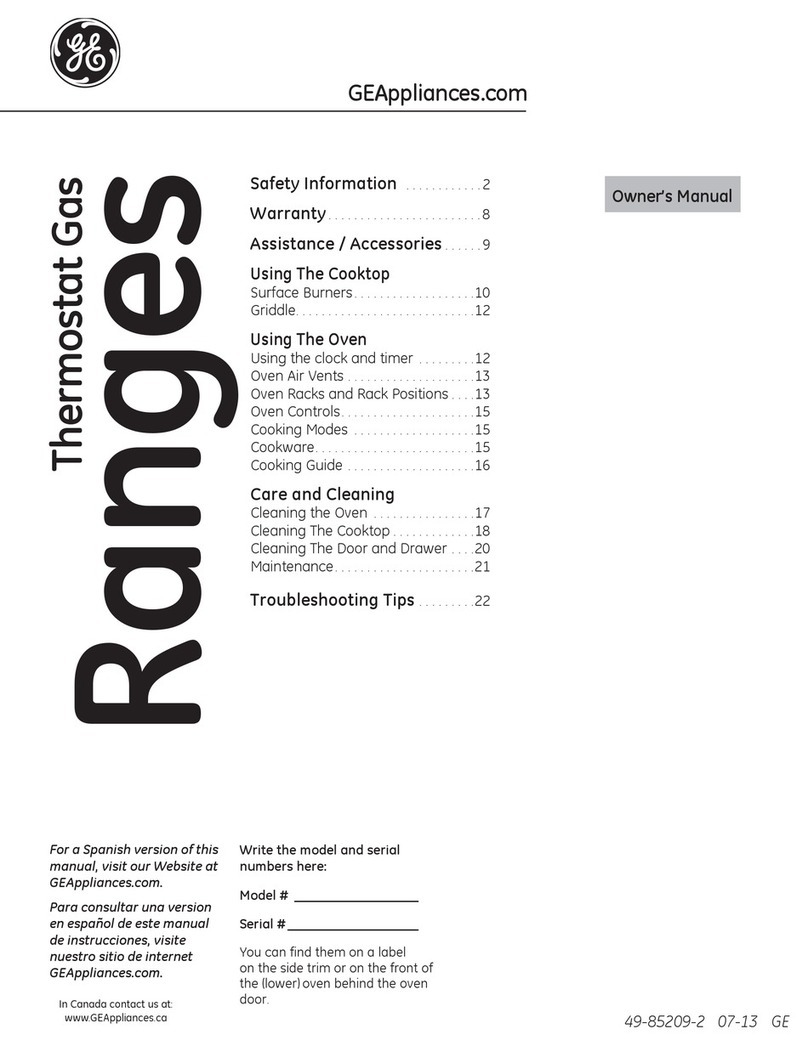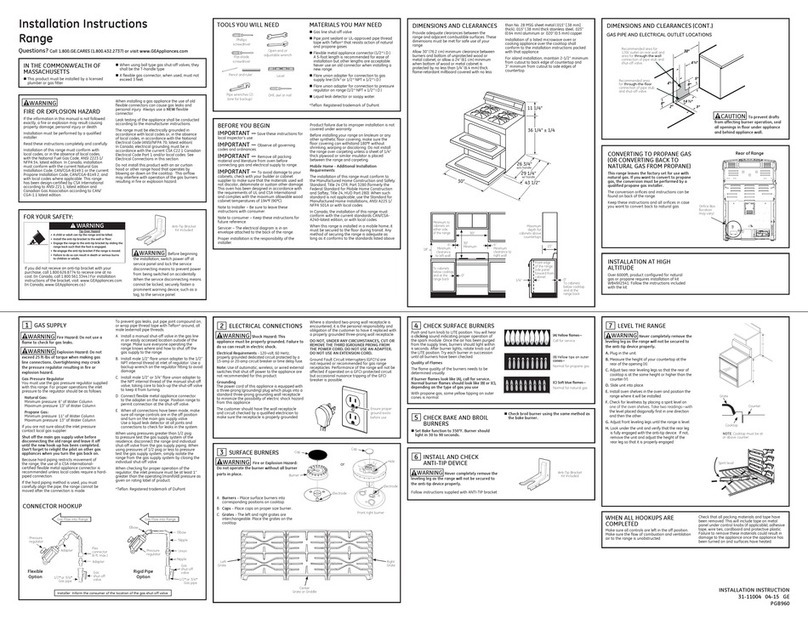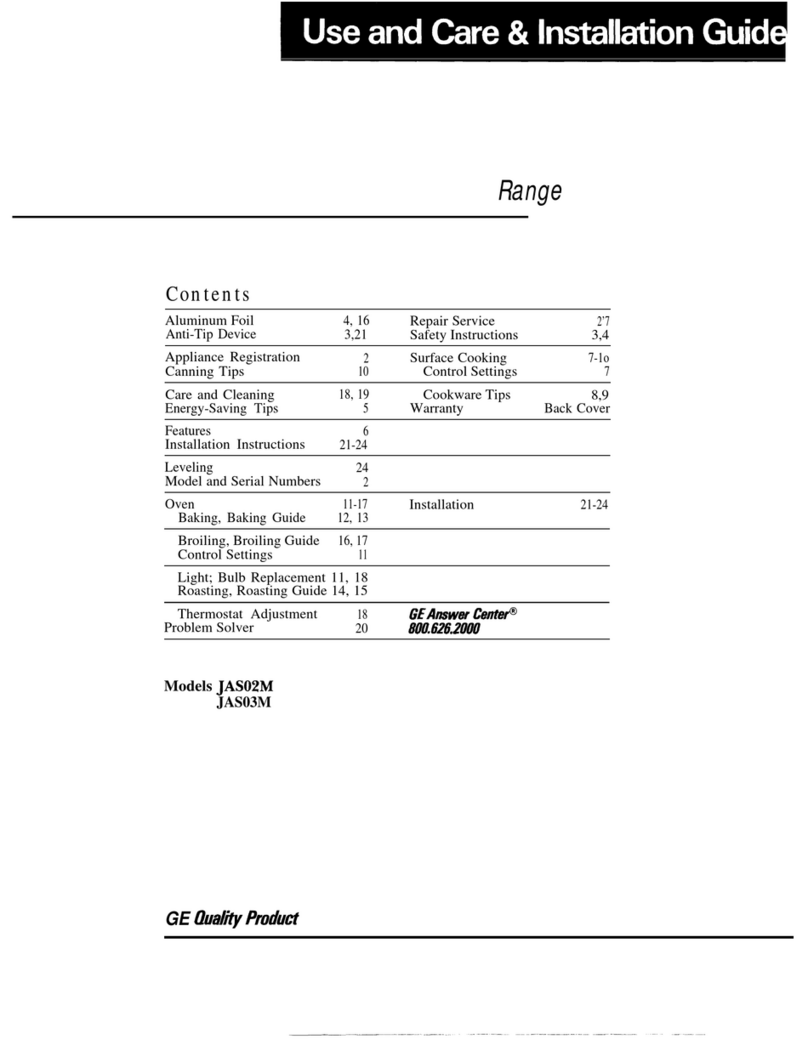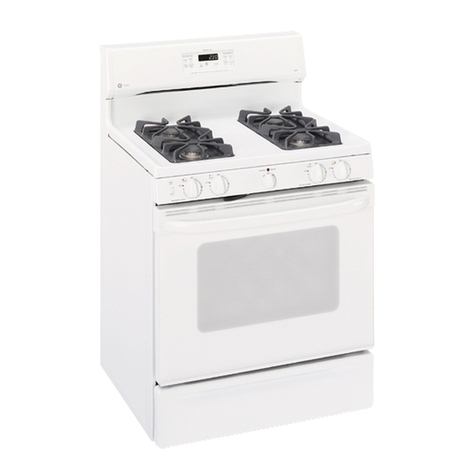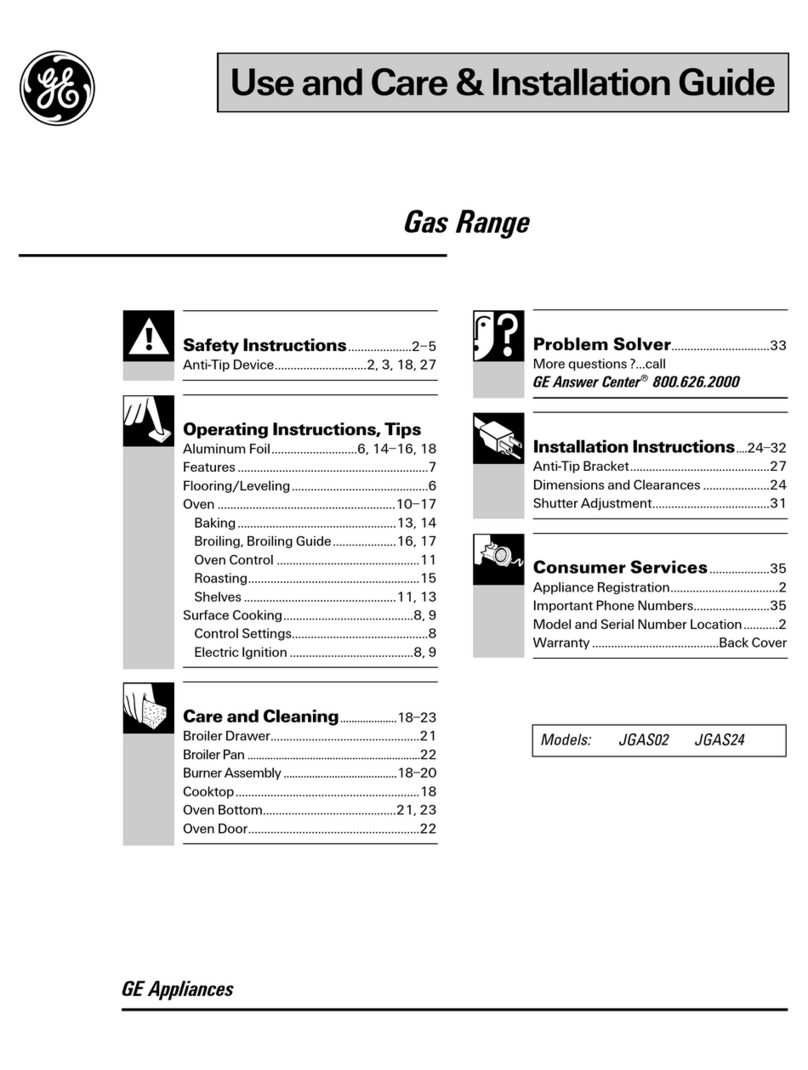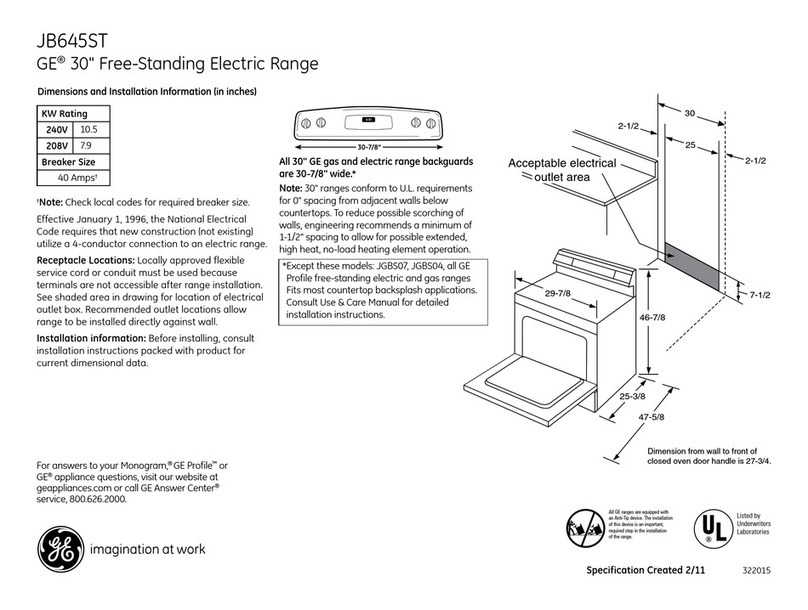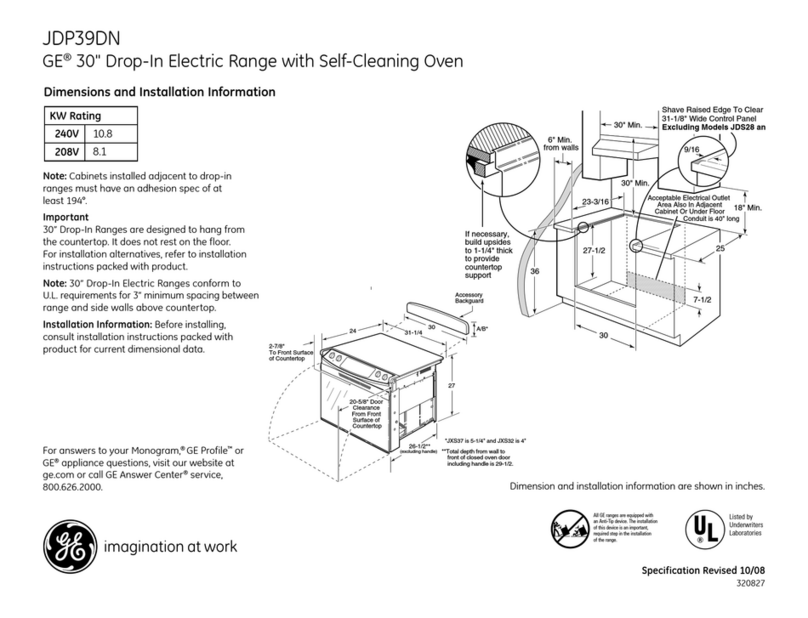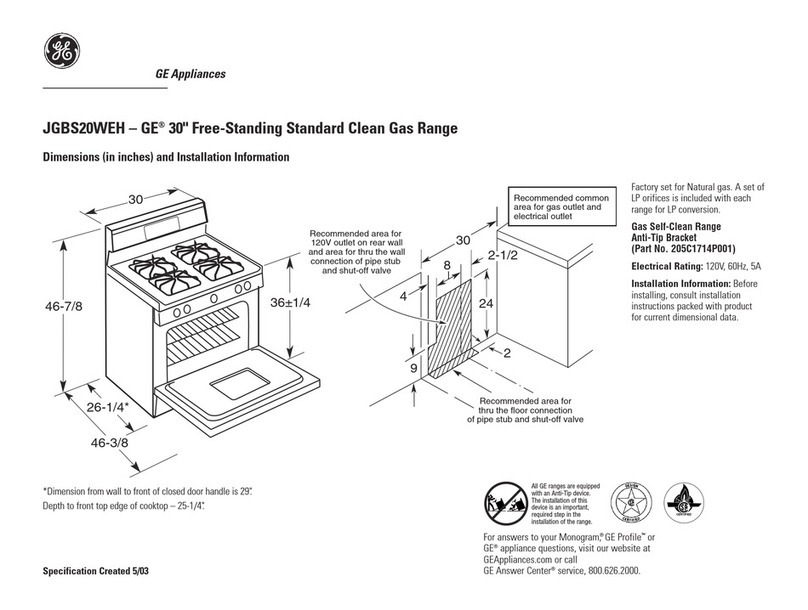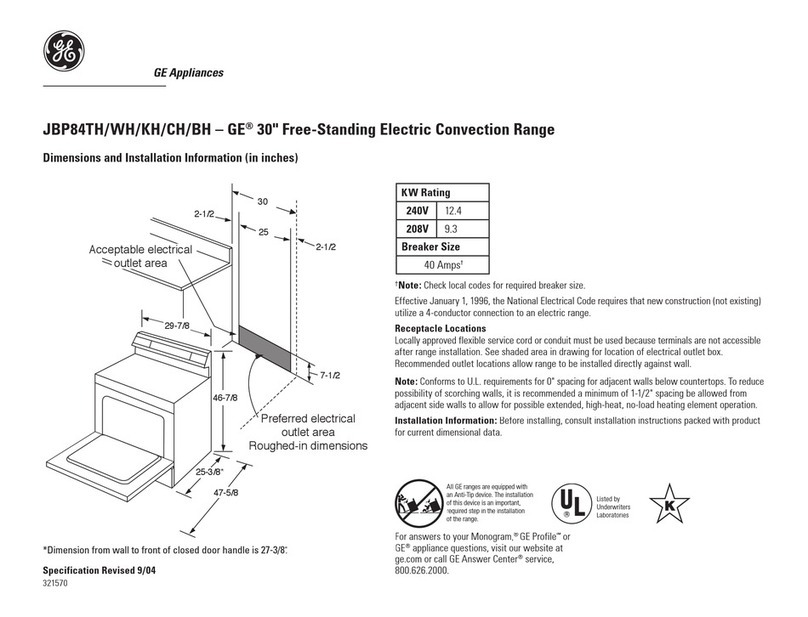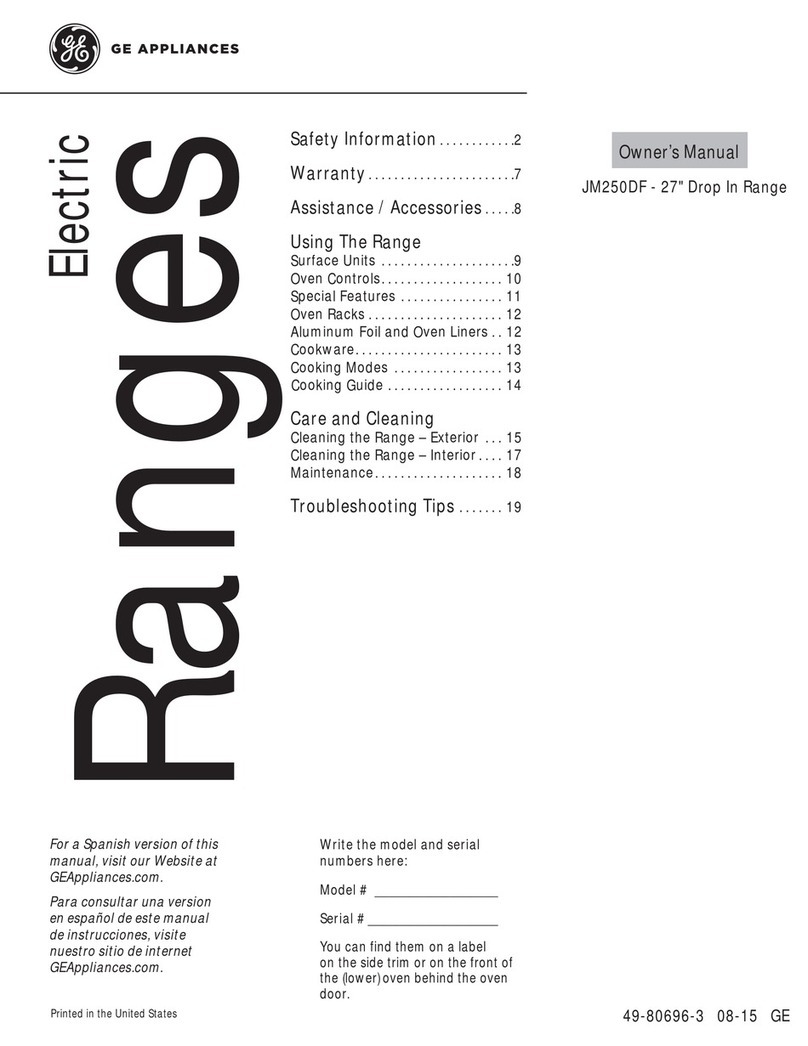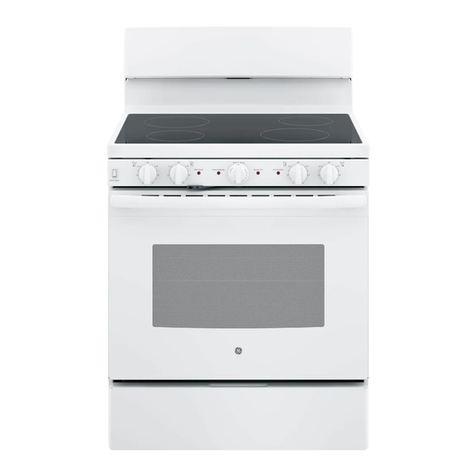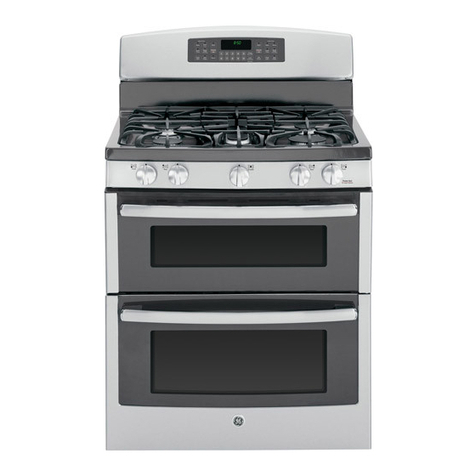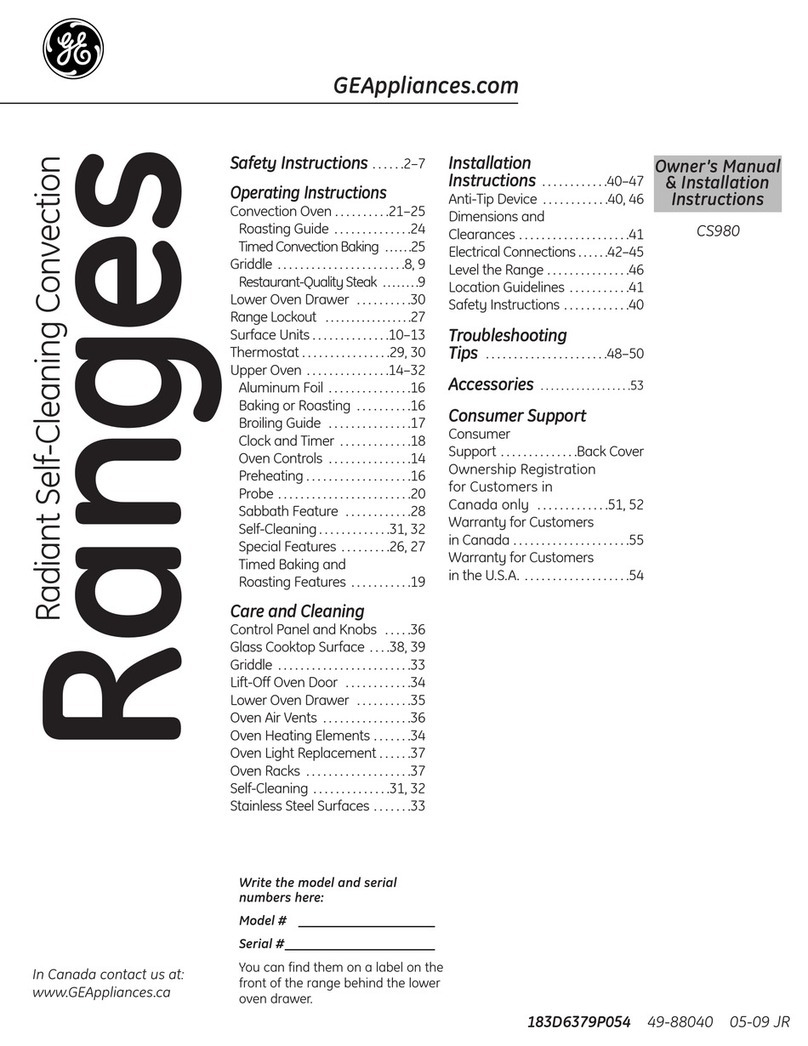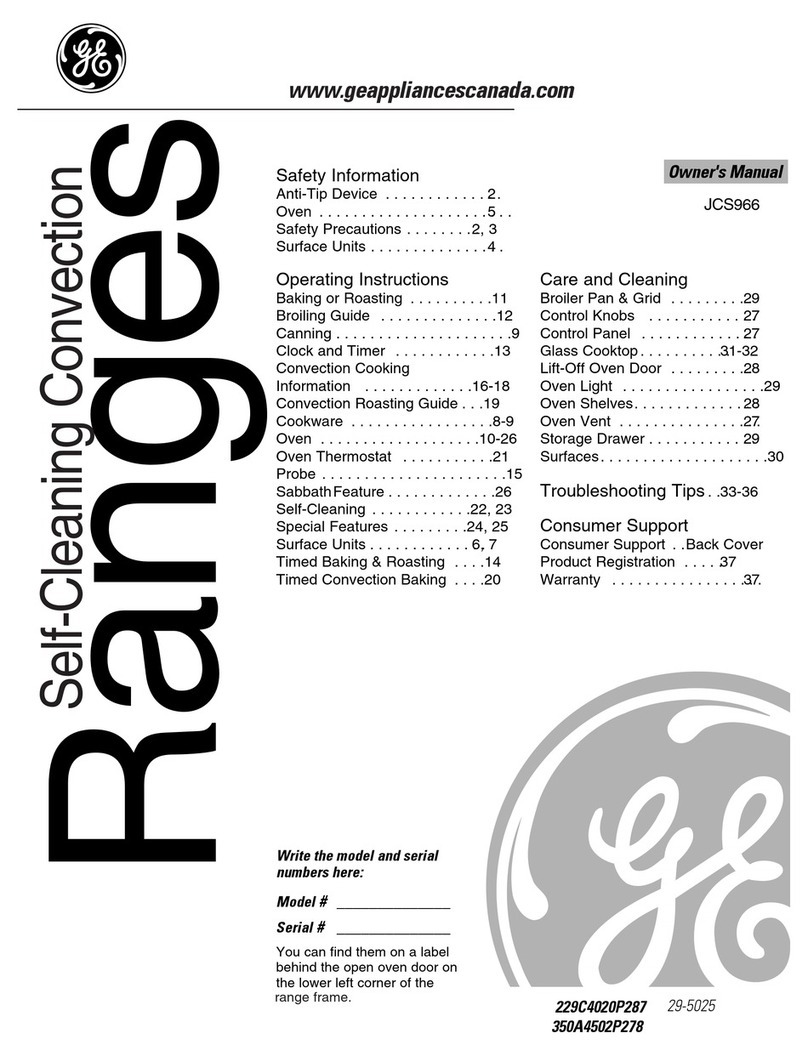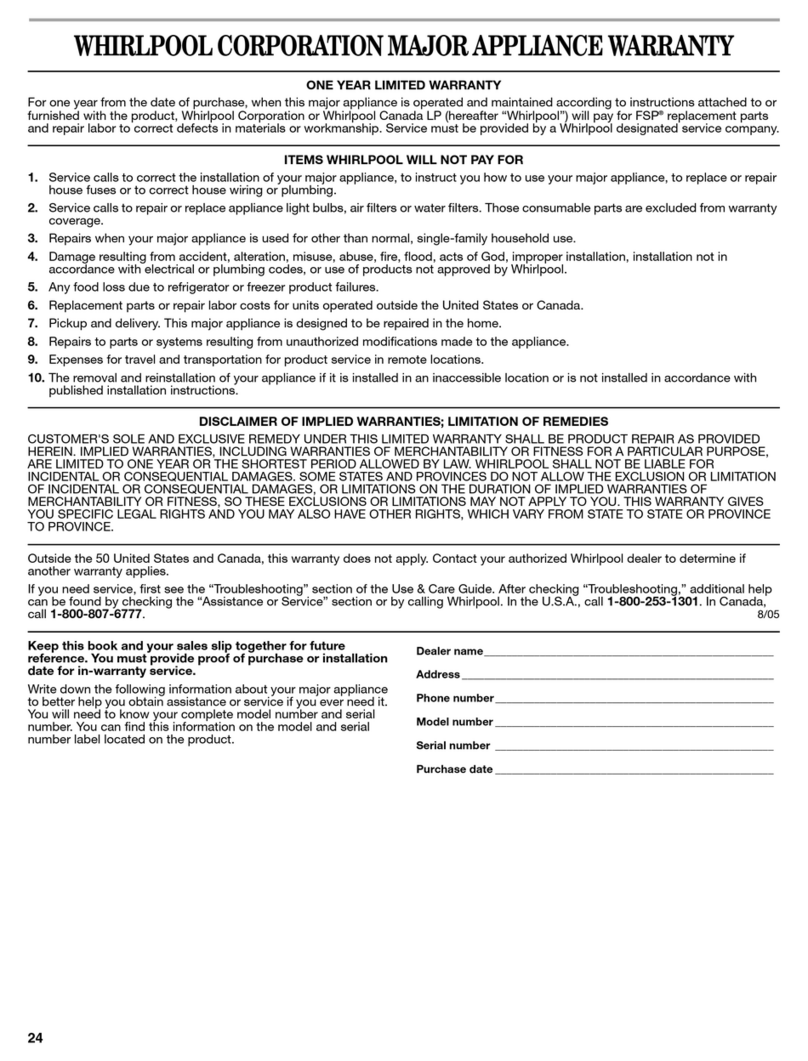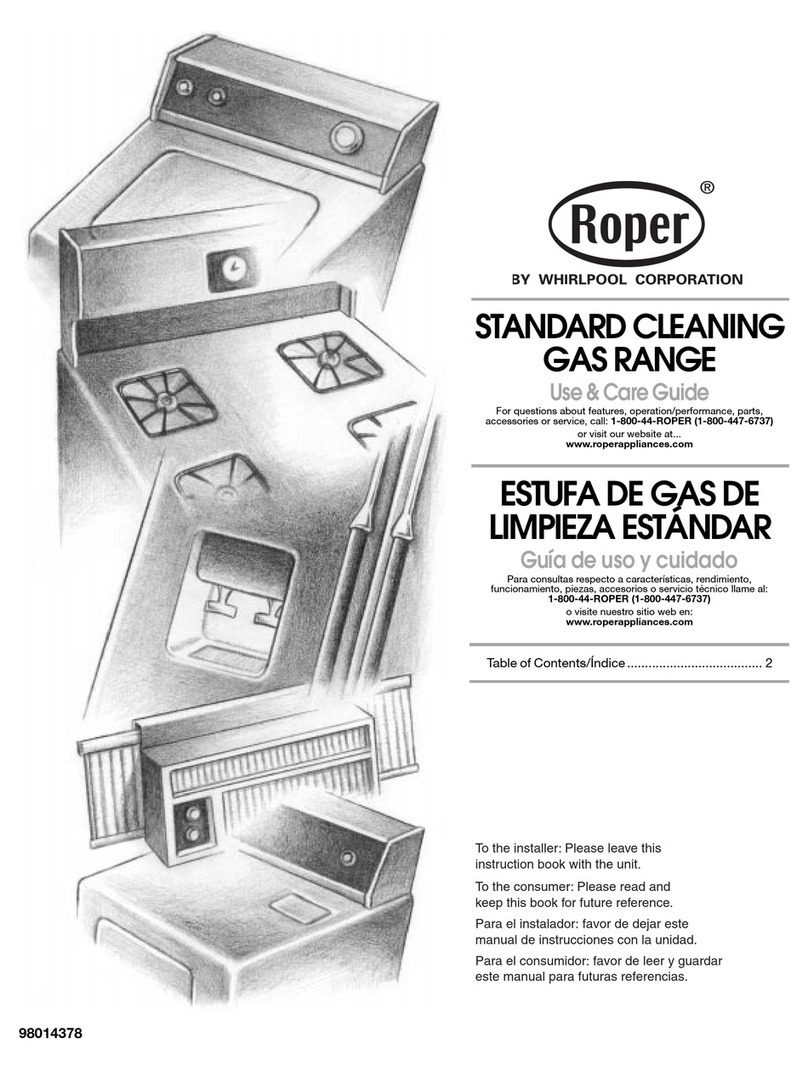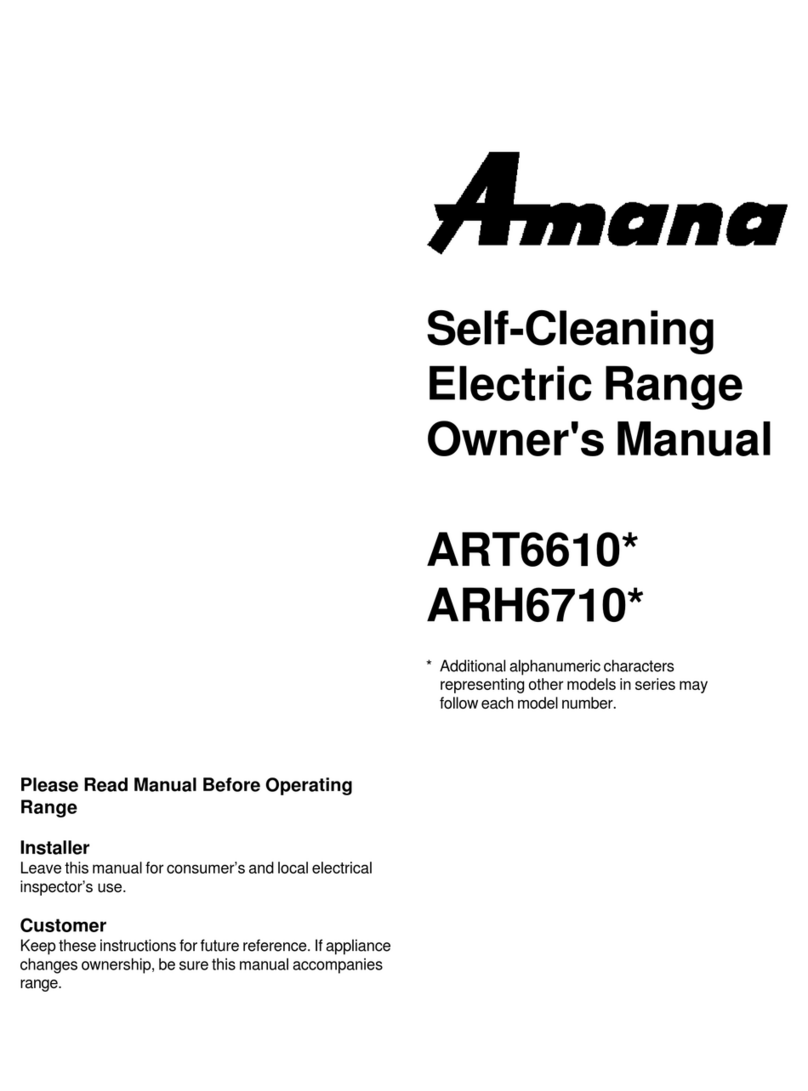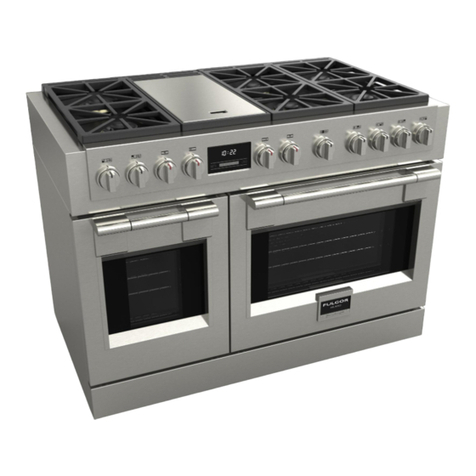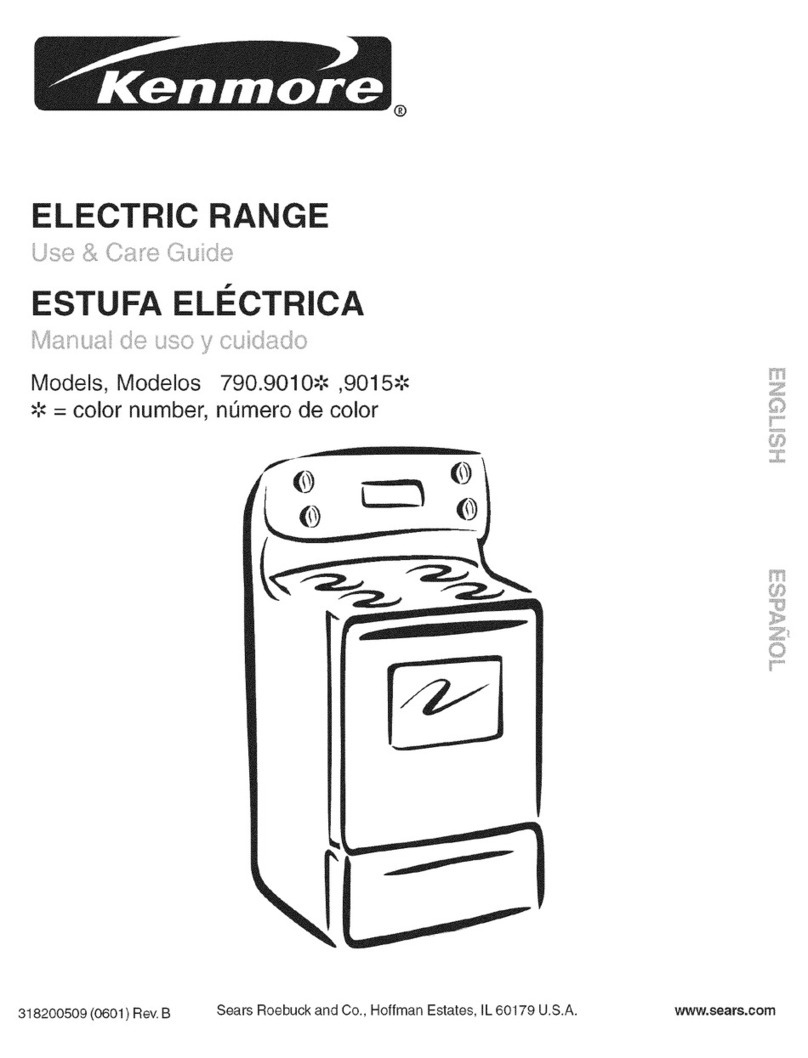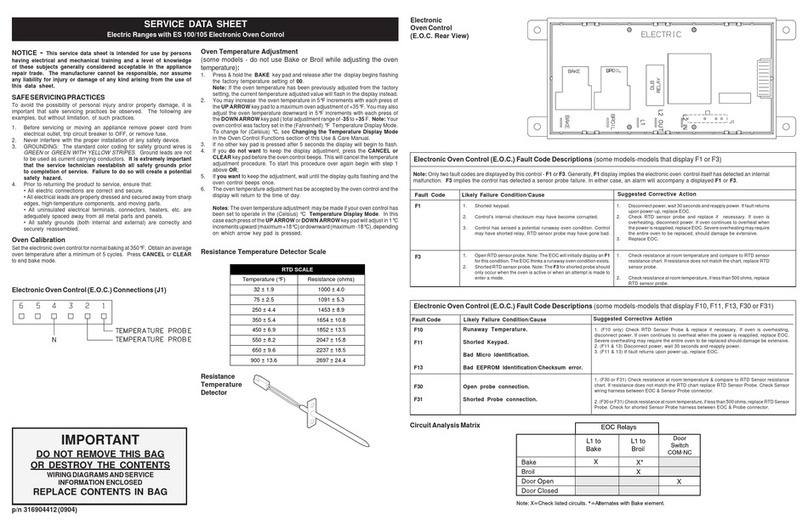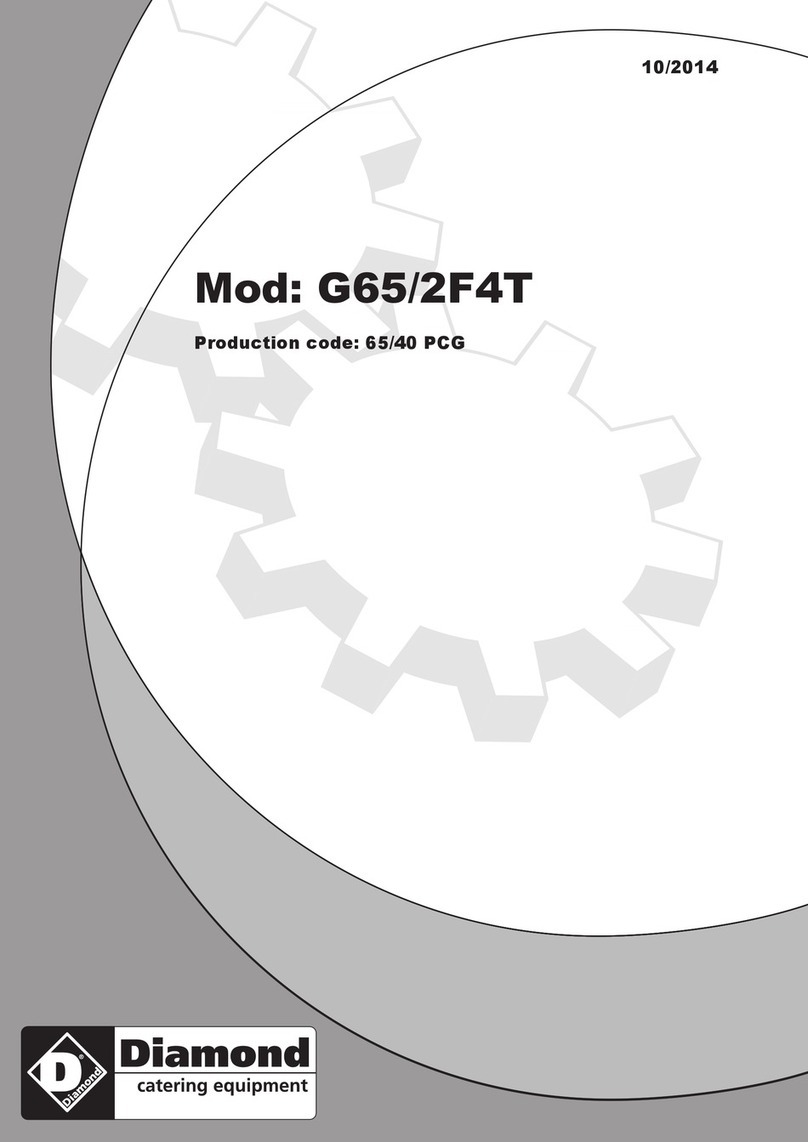Questions
—
& Answers
Q. Can I cover my drip pans with
foil?
A. No.
Clean as
recommended in
the Cleaning Guide.
Q. Can I use special cooking
equipment, such as an oriental
wok, on any module elements?
A.
Using cookware without flat
surfaces is not recommended. The
life of the elements can be shortened
and the maintop can be damaged
from the high heat needed for this
type of cooking.
Q. Why am I not getting the heat
I need from my module elements
even though I have the controls
on the right heat setting?
A.
After turning elements off and
making sure they are cool, check to
make sure that the plug-in elements
are securely fastened into the
surface electrical connection.
Q. Why does my cookware tilt
—
when I place it on the element?
A.
Because the element is not flat.
Make sure that the “feet” on the
element are sitting tightly in the
module indentation and the drip
pan is flat on the module surface.
Q. Why is the porcelain finish on
my cookware coming off?
A.
If the heat setting is higher than
required for the cookware material
and the cookware sits for along
period of time, the finish of the
cookware
used.may
smoke, crack,
pop or bum depending on the type
of cookware. Also, cooking small
amounts of dry food may damage
the cookware’s finish.
Home Canning Tips
Canning should be done on the
open coil, solid disk element or
radiant modules only. Do not use
the grill or griddle.
Pots that extend beyond 1 inch of
the element’s diameter are not
recommended for most maintop
cooking. However, when canning
with water-bath or pressure canner,
larger-diameter pots may be used.
This is because boiling water
temperatures (even under pressure)
are not harmful to maintop surfaces
surrounding the modules.
HOWEVER, DO NOT USE
LARGE-DIAMETER CANNERS
OR OTHER LARGE-DIAMETER
POTS FOR FRYING OR BOILING
FOODS
CYI’HER
THAN WATER.
Most syrup or sauce
mixtures—
and all types of frying-cook at
temperatures much higher than
boiling water. Such temperatures
could eventually harm maintop
surfaces surrounding the modules.
Observe Following Points
in Canning:
1.
Be sure canner fits over center of
the element. If your range does not
allow the canner to be centered on
the element, use smaller-diameter
pots for best canning results.
2.
Flat-bottomed canners must
be used. Do not use canners with
flanged or rippled bottoms (often
found in enamelware) because they
don’t make enough contact with the
cooking element and take too long
to boil water.
RIGHT
WRONG
3.
When canning, use recipes from
reputable sources. Reliable recipes
are available from the manufacturer
of your canner; manufacturers of
glass jars for
cannin
g, such as
Ball@
and Kerr”; and the United States
Department of Agriculture
Extension Service.
4. Remember, in following the
recipes, that canning is a process
that generates large amounts of
steam. Be careful while canning to
prevent burns from steam or heat.
N~E:
If your element is being
operated on low power (voltage),
canning may take longer than
expected, even though directions
have been carefully followed. The
process time may be shortened by:
(1)
using a pressure canner, and
(2) for fastest heating of large
quantities of water, begin with
HOT tap water.
CAUTION:
Safe canning requires that
harmful microorganisms are
destroyed and
that the jars are
completely sealed. When canning
foods in a water-bath canner, a
gentle but steady boil must be
maintained continuously for the
required time. When canning
foods in a pressure canner, the
pressure must be maintained
continuously for the required time.
If a solid disk or radiant element
is used for canning, please note
that these elements heat up and
cool down more slowly than open
coil elements. Because of this
difference, after you have
adjusted the controls, it is very
important to make sure the
prescribed boil or pressure
levels are maintained for the
required time.
The solid disk and radiant
elements have temperature
limiters that help prevent
damage to the maintop. If the
bottom of your canner is not
flat, the element can overheat,
triggering the temperature
limiters to turn the element off for
a time. This will stop the boil or
reduce the pressure in the canner.
Since you must make sure to
process the canning jars for
the prescribed time, with no
interruption in processing time,
you cannot can on solid disk or
radiant elements if the bottom
of your canner is not flat.
9

